 Happy New Year, readers!
Happy New Year, readers!
In January of 2013, I began blogging once a year about everything I’d read that previous year. This tradition began when my dad asked me how many books I’ve read in my entire lifetime.
I couldn’t begin to give him an answer to that question, but it did make me decide to start keeping track from that moment forward. The previous posts in this series are as follows: 2021, 2020, 2019, 2018, 2017, 2016, 2015, 2014, and 2013.
2022 was a year of me glancing at old reading habits and thinking about if I’m ready for them again. In 2020 and 2021, my interest in topics like horror, medicine, and anything too dark or serious crashed. I craved light, fluffy stories where everyone lived happily ever after. While I still have a strong preference for those sorts of reads, my brain seems better equipped now to handle a little more scary stuff, too, even while I’m still doing a lot of rereads and hanging out in the young adult genre.
Here are the books I’ve read (or reread) over the past year.
Biographies, Autobiographies, and Memoirs
 “The Child Who Never Grew” by Pearl S. Buck
“The Child Who Never Grew” by Pearl S. Buck
“Vintage Christmas: Holiday Stories from Rural PEI” by Marlene Campbell
“Happening” by Annie Ernaux
“To Walk About in Freedom: The Long Emancipation of Priscilla Joyner” by Carole Emberton
“This Boy We Made: A Memoir of Motherhood, Genetics, and Facing the Unknown” by Taylor Harris
“The Girls in the Wild Fig Tree” by Nice Leng’ete
“The Annals of a Country Doctor” by Carl Matlock, MD
“Dreams From My Father’ by Barack Obama
“The Light We Carry: Overcoming in Uncertain Times” by Michelle Obama
“The Adoption Machine: The Dark History of Ireland’s Mother and Baby Homes and the Inside Story of How ‘Taum 800’ Became a Global Scandal” by Paul Judd Redmond
“Three More Words“ by Ashley Rhodes-Courter
“Lucy Maud Montgomery: The Gift of Wings” by Mary Henley Rubio
“Listen, World!: How the Intrepid Elsie Robinson Became America’s Most-Read Woman” by Julia Scheeres
“Been There, Ate That: A Candy-Coated Childhood” by Jules Torti
“Farewell to the East End” by Jennifer Worth
Fiction

“Little Women” by Louisa May Alcott
“Forever” by Kris Bryant
“The Good Earth” by Pearl S. Buck
“Once Upon a Wardrobe” by Patti Callahan
“My Antonia” by Willa Cather
A Christmas Memory” by Richard Paul Evans
“The Snow Child” by Eowyn Ivey
“Foster” by Claire Keegan
“Rebecca” by Daphne du Maurier
“Marmee: A Novel of Little Women” by Sarah Miller
“Anne of Green Gables” by L.M. Montgomery
“Anne of Avonlea” by L.M. Montgomery
“Anne of the Island” by L.M. Montgomery
“Anne’s House of Dreams” by L.M. Montgomery
“Rilla of Ingleside” by L.M. Montgomery
“The Story Girl” by L.M. Montgomery
“The Golden Road” by L.M. Montgomery
“The Blue Castle” by L.M. Montgomery
“The Only Child” by Kate Nunn
“The Secret Lives of Church Ladies” by Deesha Philyaw
“A Tree Grows in Brooklyn” by Betty Smith
“Of Mice and Men” by John Steinbeck
“The Little Stranger” by Sarah Waters
“Miss Jane” by Brad Watson
“Cold: Three Winters at the South Pole” by Wayne L. White
History
 “A Short History of the World According to Sheep” by Sally Coulthard
“A Short History of the World According to Sheep” by Sally Coulthard
“The Girls Who Went Away: The Hidden History of Women Who Surrendered Children for Adoption in the Decades Before Roe vs. Wade” by Ann Fessler
“Let’s Get Physical: How Women Discovered Exercise and Reshaped the World” by Danielle Friedman
“Women’s Diaries of the Westward Journey” by Lillian Schlissel
Psychology and Sociology
 “You Have More Influence Than You Think: How We Underestimate Our Power of Persuasion and Why It Matters” by Vanessa Bohns
“You Have More Influence Than You Think: How We Underestimate Our Power of Persuasion and Why It Matters” by Vanessa Bohns
“Big Panda and Tiny Dragon” by James Norbury
“Winning with Underdogs: How Hiring the Least Likely Candidates Can Spark Creativity, Improve Service, and Boost Profits for Your Business” by Gil Winch
Science Fiction and Fantasy
 “World War Z” by Max Brooks
“World War Z” by Max Brooks
“Ghost Stories for Christmas” by Shane Brown (My Review)
“Semiosis” by Sue Burke
“A Prayer for the Crown-Shy (Monk & Robot Series Book 2)” by Becky Chambers (My Review)
“Brave New World” by Aldoux Huxley
“The Turn of the Screw” by Henry James
“Veiled Threats” by Melissa Erin Jackson
”The Cybernetic Tea Shop” by Meredith Katz (Review coming February 9)
“Nettle & Bone” by T. Kingfisher (My Review)
“In a Glass Darkly” by Sheridan Le Fanu (Review coming January 12)
“Animal Farm” by George Orwell
“On Sundays She Picked Flowers” by Yah Yah Scholfield (My Review)
“Station Eleven” by Emily St. John Mandel
“The Hobbit” by J.R.R. Tolkien
“Annihilation” by Jeff VanderMeer
“The World More Full of Weeping” by Robert J. Weirseam
“The Future Is Female” edited by Lisa Yaszek (Review coming January 19)
“The Future Is Female Volume 2, The 1970s” edited by Lisa Yaszek (Review coming January 26)
Science and Medicine
 “The Last Days of the Dinosaurs: An Asteroid, Extinction, and the Beginning of Our World” by Riley Black
“The Last Days of the Dinosaurs: An Asteroid, Extinction, and the Beginning of Our World” by Riley Black
“Tiny Humans, Big Lessons: How the NICU Taught Me to Live With Energy, Intention, and Purpose” by Sue Ludwig
“Vaccinated: From Cowpox to mRNA, the Remarkable Story of Vaccines” by Paul A. Offit, M.D.
“The Heart of Caring: A Life in Pediatrics” by Mark Vonnegut
Young Adult
 “Empty Smiles (Small Spaces #4)” by Katherine Arden
“Empty Smiles (Small Spaces #4)” by Katherine Arden
“Beezus and Ramona” by Beverly Cleary
“Ramona the Pest” by Beverly Cleary
“Ramona the Brave” by Beverly Cleary
“Ramona and Her Father” by Beverly Cleary
“Ramona and Her Mother” by Beverly Cleary
“Ramona Quimby, Age 8” by Beverly Cleary
“Ramona Forever” by Beverly Cleary
“Ramona’s World” by Beverly Cleary
“Secrets of the Under Market” by Kristen Harlow
“The Lost Girls” by Sonia Hartl
“The Giver” by Lois Lowry
“A Chair for My Mother” by Vera B. Williams
Have we read any of the same books? How was your reading year in 2022?

 I enjoyed tearjerkers a lot more when I was a kid than I do now as an adult. Or maybe my tastes in this genre have simply evolved over time?
I enjoyed tearjerkers a lot more when I was a kid than I do now as an adult. Or maybe my tastes in this genre have simply evolved over time?
 Happy New Year, readers!
Happy New Year, readers! “After the Annex: Anne Frank, Auschwitz, and Beyond” by Bas
“After the Annex: Anne Frank, Auschwitz, and Beyond” by Bas “Destination Prairie” by Cathie Bartlett
“Destination Prairie” by Cathie Bartlett “50 Ways to Soothe Yourself Without Food” by Susan Albers
“50 Ways to Soothe Yourself Without Food” by Susan Albers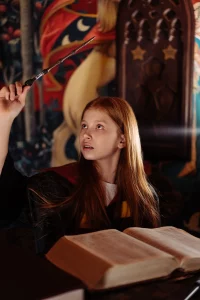 “The Girl With All the Gifts” by M.R. Carey
“The Girl With All the Gifts” by M.R. Carey “Cave of Bones: A True Story of Discovery, Adventure, and Human Origins” by Lee Berger and John Hawks
“Cave of Bones: A True Story of Discovery, Adventure, and Human Origins” by Lee Berger and John Hawks  “Still Stace” by Stacey Chomiak
“Still Stace” by Stacey Chomiak  My questions for this week’s prompt are how far back are people going to go when selecting older books and how many of us will have already read what other folks recommend?
My questions for this week’s prompt are how far back are people going to go when selecting older books and how many of us will have already read what other folks recommend? Happy New Year, readers!
Happy New Year, readers! “The Child Who Never Grew” by Pearl S. Buck
“The Child Who Never Grew” by Pearl S. Buck “Little Women” by Louisa May Alcott
“Little Women” by Louisa May Alcott “A Short History of the World According to Sheep” by Sally Coulthard
“A Short History of the World According to Sheep” by Sally Coulthard “You Have More Influence Than You Think: How We Underestimate Our Power of Persuasion and Why It Matters” by Vanessa Bohns
“You Have More Influence Than You Think: How We Underestimate Our Power of Persuasion and Why It Matters” by Vanessa Bohns “World War Z” by Max Brooks
“World War Z” by Max Brooks “The Last Days of the Dinosaurs: An Asteroid, Extinction, and the Beginning of Our World” by Riley Black
“The Last Days of the Dinosaurs: An Asteroid, Extinction, and the Beginning of Our World” by Riley Black “Empty Smiles (Small Spaces #4)” by Katherine Arden
“Empty Smiles (Small Spaces #4)” by Katherine Arden
 1. Enjoying Good Weather
1. Enjoying Good Weather 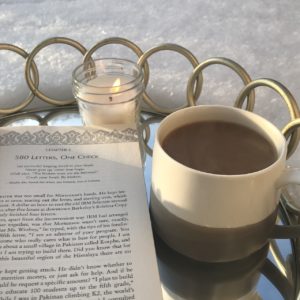 anuary of 2013, I began blogging once a year about everything I’d read that previous year. This tradition began when my dad asked me how many books I’ve read in my entire lifetime.
anuary of 2013, I began blogging once a year about everything I’d read that previous year. This tradition began when my dad asked me how many books I’ve read in my entire lifetime.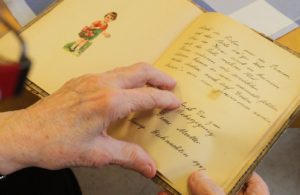 “American Bastard” by Jan Beatty
“American Bastard” by Jan Beatty
 “White Unwed Mothers: The Adoption Mandate in Postwar Canada” by Valerie Andrews
“White Unwed Mothers: The Adoption Mandate in Postwar Canada” by Valerie Andrews “The Children of Green Knowe” by Lucy M. Boston
“The Children of Green Knowe” by Lucy M. Boston “Why Smart People Make Bad Food Choices: The Invisible Influences That Guide Our Thinking” by Jack Bobo
“Why Smart People Make Bad Food Choices: The Invisible Influences That Guide Our Thinking” by Jack Bobo “The Hospital: Life, Death, and Dollars in a Small American Town” by Brian Alexander
“The Hospital: Life, Death, and Dollars in a Small American Town” by Brian Alexander “Dark Waters” by Katherine Arden (Review coming in 2022)
“Dark Waters” by Katherine Arden (Review coming in 2022) In January of 2013, I began blogging once a year about everything I’d read that previous year. This tradition began when my dad asked me how many books I’ve read in my entire lifetime.
In January of 2013, I began blogging once a year about everything I’d read that previous year. This tradition began when my dad asked me how many books I’ve read in my entire lifetime. “Mrs. Beaton’s Question: My Nine Years at the Halifax School for the Blind” by Robert Mercer
“Mrs. Beaton’s Question: My Nine Years at the Halifax School for the Blind” by Robert Mercer History
History Science Fiction and Fantasy
Science Fiction and Fantasy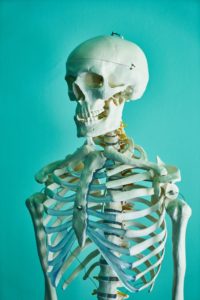 “The Great Indoors: The Surprising Science of How Buildings Shape Our Behaviour, Health, and Happiness” by Emily Anthes
“The Great Indoors: The Surprising Science of How Buildings Shape Our Behaviour, Health, and Happiness” by Emily Anthes “The Narcissist in Your Life: Recognizing the Patterns and Learning to Break Free” by Julie L. Hall
“The Narcissist in Your Life: Recognizing the Patterns and Learning to Break Free” by Julie L. Hall
 Two years ago, I wrote
Two years ago, I wrote 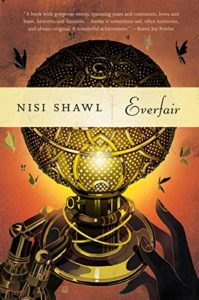 Title: Everfair
Title: Everfair